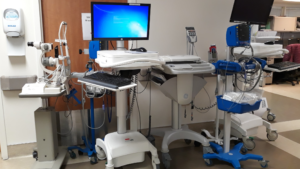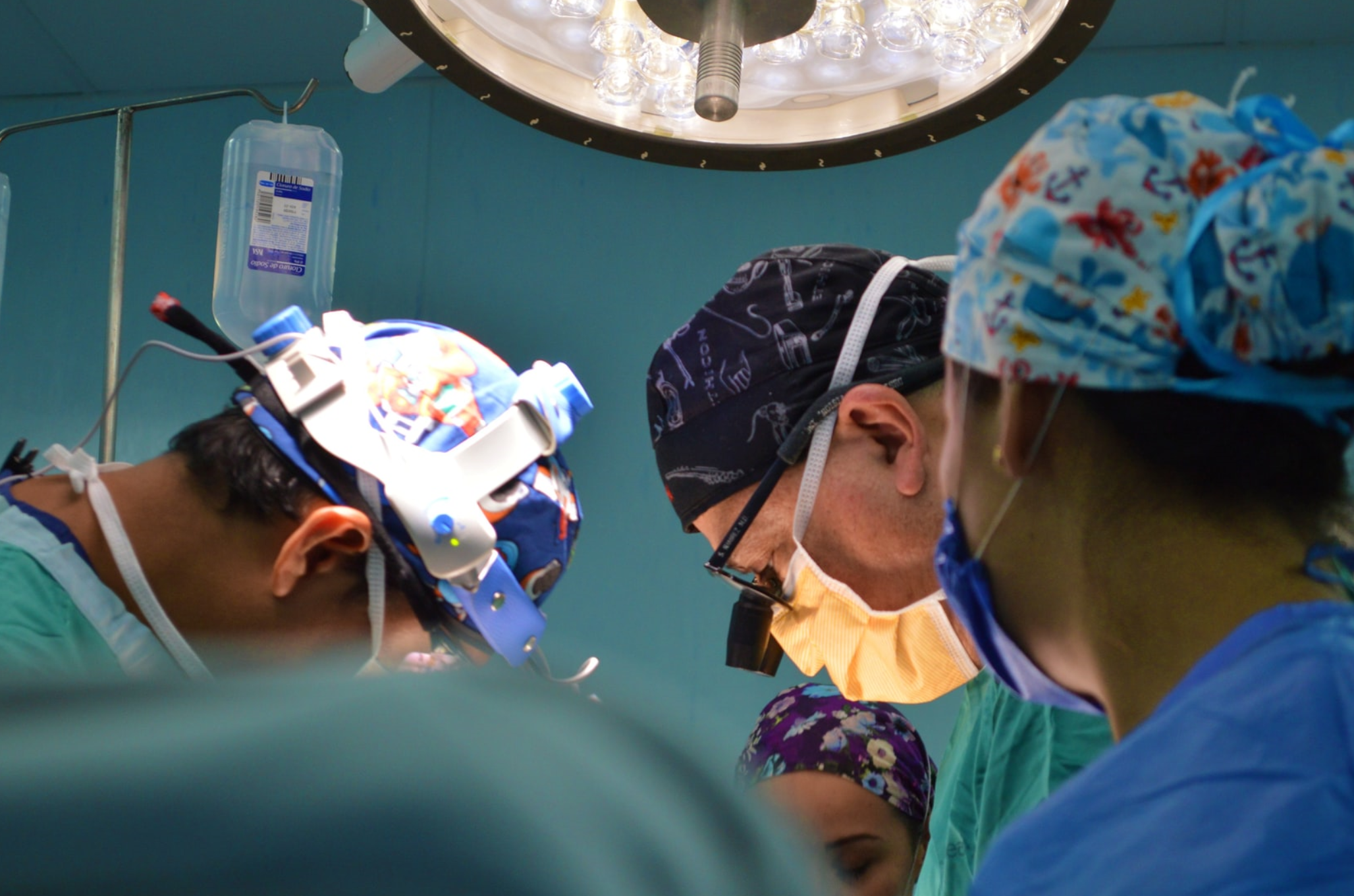
Why Optimizing Hospital WiFi Networks Helps Save Lives

In today’s hospitals, IoT devices and other wireless medical devices are commonplace and essential. The number of devices on a hospital network – devices that provide critical and life-saving information – only continues to grow. Reliable and consistently strong network performance is a mission-critical resource. Any network downtime or connectivity issues can be catastrophic.
Identifying the root cause of WiFi challenges is the first step to take in mitigating and preventing any network downtime. Here are the 4 most common causes of WiFi issues in hospitals:
-
- Building Design: many hospitals are in older buildings that weren’t designed with wireless networks in mind. Even newer hospital construction can provide obstacles as construction materials that are best for the healthcare operations aren’t always best for a network. For example, concrete and lead walls block WiFi signals; and MRI machines and microwaves in break rooms can provide radio frequency (RF) interference. In addition, hospitals have many floors and buildings, and deploying a network that reaches every corner can be challenging.
- Unpredictable Density: in order to effectively deploy Access Points (APs), network engineers need to know all of the high density areas of a hospital, as well as locations that will experience high bandwidth usage. It’s easy to predict that certain areas, like the waiting room and the cafeteria, will see consistent high density, but what other areas might periodically exhibit high density? Where and when are people congregating? Those areas need to be able to handle the WiFi load, but that isn’t as simple as installing an AP in every hallway and room. Too many APs can actually cause network issues.
- Constant Introduction of New Devices: In 2017, HIT Infrastructure estimated that a large hospital relied on around 85,000 connected devices in addition to its regular computer system. This number has likely only increased as the number of devices on the market has grown exponentially. The constant introduction of new WiFi devices and equipment can lead to too many devices competing for bandwidth and airtime, as well as interoperability and interference issues. Tied into this is a need for network engineers and building administrators to be able to successfully plan for the future. What is happening on the network now and how has that changed over the last few months and years? Networks can’t only be designed for the present, but must be configured to support hospitals over the next 3-5 years.
- Around the Clock Roaming: healthcare providers are continuously moving throughout a facility, and patients can be moved between rooms or floors. All wireless medical devices used by providers and patients must remain connected to the network at all times. There must be a seamless handoff from AP to AP with no dead zones. Providers can’t risk losing service and missing a critical update; and patient monitoring devices – whether monitoring vitals or tracking location – must constantly send data to providers.
How do hospitals troubleshoot these problem areas? With complete network visibility and control, and proactive testing, issue identification, and resolution.
Complete Network Visibility
Hospitals need visibility into the entire network in order to quickly identify and resolve problems, and permanently improve network performance. The WiFi ecosystem is dynamic and complex, changing throughout the night and day as devices, users, and applications drop on and off. IT teams need “eyes” on the network at all times to have the certainty that network health and performance are optimized, and to receive notifications instantly if anything goes wrong. They can’t afford to wait a few hours or even a few minutes to receive an issue alert.
Complete network visibility will also reveal if there are any areas of a hospital with dead zones or poor coverage. Once identified, IT can take steps to resolve the issue. Using an analytics solution that provides constant, 24/7 visibility with real time monitoring and live analytics is an excellent way to improve the performance of a hospital WiFi ecosystem.
Historical Analytics
While real-time analytics are immensely valuable, hospitals also need historical analytics for effective budget and capacity planning. With historical analytics, hospitals can review network utilization and performance over the last few months or few years, and determine what network infrastructure needs to be upgraded and/or how the network design needs to be modified to best fit the hospital’s current and future needs.
Historical analytics also give IT the ability to review performance from the past hour or day. This allows them to determine if newly connected devices, or software or hardware changes, have had a negative impact on the health of the network. This proactive approach prevents interoperability issues from growing until they affect providers and patients.
Network Control
Once all devices are identified, IT can determine network utilization. Which devices are using the majority of the bandwidth? Should they be doing so? Are congestion issues caused by guests streaming videos, or is there an issue with the electronic health records system?
Once determined, there are steps that IT can take to prevent non-priority devices from using too much of the network’s bandwidth. Using segmentation, or role-based access controls, IT can assign traffic to different networks, and then assign different permissions to each network. For example, the network used only by medical devices and staff communication devices can be allotted a higher percentage of the bandwidth. This improves network speed for life-saving medical devices, and heightens security by limiting who has access to networks with PPI.
Proactive Testing, Issue Identification, and Resolution
A crucial piece of network optimization is proactivity. Identifying and resolving problems before they have a chance to impact end users is an important step in optimizing the network. To support IT teams, hospitals can use an analytics tool that provides scheduled network tests with automatic alerts if a test fails for any reason. As the network is constantly changing, scheduling tests to run on a continuous basis prevents the chance of there being any surprises that cause network downtime.
The Wireless Intelligence Platform
Wyebot is the leader in AI-driven WiFi automation with its award-winning, patented Wireless Intelligence Platform (WIP). WIP provides complete WiFi ecosystem visibility, and automatically recognizes and notifies IT departments of any WiFi concerns before they become issues. WIP delivers:
- A 90% decrease in mean time to resolution
- A 50% decrease in WiFi problem tickets
- An 80% decrease in remote site visits
The Wireless Intelligence Platform identifies each device connected to the network, its WiFi technology, and other capabilities using its device fingerprinting, behavioral profiling, and client monitoring. It provides proactive 24/7 detection, notification, and mitigation of all issues, with potential problems identified and reported automatically along with actionable suggestions for resolution.
Its synthetic network test suite runs on a manual or periodic basis over wired and wireless networks, and enables IT to remotely diagnose and troubleshoot any and all problems. The tests run 24/7 and automatic alerts are sent if a test fails in any way or falls below previously set.
Historical analytics are automatically captured and saved, giving IT the ability to review past data on general network health or a specific device. WIP automatically creates graphs that display trends over time with data on APs, client distribution, airtime and client utilization.
Finally, WIP is vendor agnostic. Together with its plug-and-play capability, this lets WIP integrate seamlessly with any existing network infrastructure and WiFi service providers. No matter what changes are made to the network, WIP will continue to provide unparalleled automatic and proactive insights.
Hospitals are complex and dynamic environments that rely on wirelessly connected medical devices and optimized wireless networks. Network performance is critical to providing life-saving services to patients. Slow or unreliable service is unacceptable. The last thing providers need to worry about is the status of the network. With WIP, the network runs optimally, no questions asked, and IT are supported in performing their mission-critical work even if they are unable to travel on site. Let WIP support the health of the network, so that hospitals can focus on saving lives.

